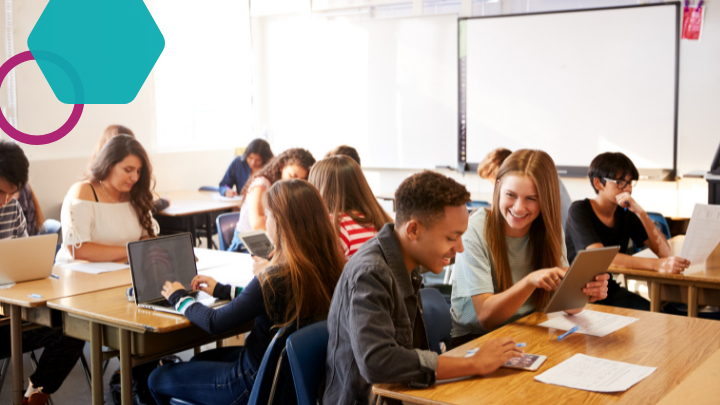One of the simplest planning moves can yield the greatest results: scheduling buffer times in your instructional progression to support students in getting whatever they need to reach mastery. During these learning times, we as teachers commit not to teach new content to the whole group but to create a space for students to focus on previously taught materials they need to get better at.
Many call this strategic learning time “Whatever I Need” or W.I.N. time, but you might also find it under names like workshopping or filling in the gaps. As a math teacher and coach, I used it repeatedly in my classroom and coached many teachers on how to plan, structure, and maximize this routine. Every time, the same magic happened: Students grew academically and gained essential skills such as self-awareness, goal-setting, data analysis, action planning, and focused practice. In addition to all these benefits, students who are taught and trusted to engage in structures like W.I.N. time often develop stronger relationships with their teachers because they see in them the willingness to let mistakes be true learning opportunities and to give them more than one chance to reach mastery.
W.I.N. Time in Action
What is happening in a classroom where learners engage in W.I.N. time? In the video below, Blended Learning Master Teacher Daniel Guerrero leads his students through his own version of W.I.N. that he calls Workshop.
Notice the following key characteristics in action:
- Daniel is NOT teaching new content nor is he engaging in whole-group instruction.
- Students know what they need to get better at and are taking ownership of how they want to get better at it.
- Daniel offers a variety of learning modalities including small group and independent work so each student can focus on exactly what they need.
- Students are invited to self-assess and reflect on what growth looks like for them today and what still remains a work in progress.
- Daniel compares self-assessment data and student decisions with the actual learning data he analyzes after the activity to determine how to improve the next W.I.N. time.
Getting Started with W.I.N. Time
To implement W.I.N. time successfully, start small with a limited number of options and no teacher station for the first few times so that you can support students in being successful with more autonomy. Gradually, you can increase the number of learning modalities available and offer your teaching in a small group once you have a good grasp on how to support students in maximizing this time.
But beyond this tip, I would like to leave you with this planning and execution checklist with steps and resources to help you before, during, and after your first W.I.N time. Enjoy building your students’ growth mindset and agency, you won’t regret it.
Your W.I.N. Checklist
Before W.I.N. Time: What do I need to prepare?
- Give students access to their learning data on a previous assessment.
- Support them in analyzing this data to extract growth areas and set goals for W.I.N. time. Check out some templates here.
- Analyze the data on your own so that you can cross-reference and create groups that need help with the same concept. Identify students at mastery on everything and think about how you will leverage their strengths while challenging them.
- Organize a variety of resources for students working independently or with peers on a given growth area. Resources can include identifying assignments in your favorite learning platform or using hyperdoc pathways, activity cards, manipulatives, etc.
- Support students in creating a documented work plan for their W.I.N. time that includes areas to address, a place to check off completion, and room for self-assessment. Plan to check this document before they start working and after they have self-assessed.
- Get students excited about this opportunity by framing it as a chance to grow and learn from our mistakes without judgment. Also share how this could positively impact their grades. Once they are fired up, co-create learning expectations with them for their first time using W.I.N. time.
During W.I.N. Time: How do I maximize my time and effectiveness?
- Strategically plan where you seat students. Ensure that your small group workstation still gives you a wide-angle vision of all of your learners and their tasks and screens.
- When you work with a small group, include a warm-up as the first task so that you can take a moment to support the launch of the other independent or collaborative activities.
- Use the fact that you can see the whole room to notice students meeting your expectations and positively narrate what you see. Quickly redirect off-task behavior in a non-intrusive way.
- Think about assigning helpful jobs students could hold during W.I.N. time and that would minimize your need to troubleshoot small issues. It is a great opportunity to leverage the strengths of your students. Think of roles like tech helper, tutor for a skill, etc.
- Consider strategically using peer tutoring for your students near mastery and who might just need a slight extra push. Determine your process to select them and the expectations for what their support should look like
After W.I.N time: What can I do next time to improve efficacy?
- Take a deep breath and be proud of the fact that you gave your students a chance to use their mistakes as learning opportunities. Even if it did not look perfect, remember the message you sent to your students by creating a space for growth.
- Take a look at the student work plans and see what they are reporting being able to accomplish during this time.
- Cross-reference student self-assessment data with the data you can collect from the assessments embedded in the independent tasks.
- Shout out and celebrate students who have worked hard and in alignment with what they needed the most.
- Kindly check in with the ones who did not pick the right topic or the right modality for themselves and help them reflect so that they can do a better job next time.
- Determine a few logistical changes you will make next time to respond to what we did not go as well as you wanted. You will keep growing and they will too!
Ready to implement W.I.N. time in your classroom? Download this free checklist to help you get started.
Download the W.I.N. Checklist







